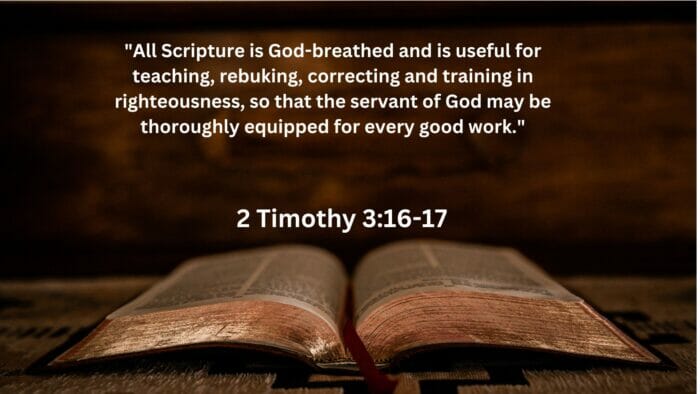In this comprehensive article, we explore the reasons behind Joseph and Mary’s journey to Bethlehem, the individuals who influenced their decision, the logistics of their travel, the census order, and the historical context of the time.
Why Did Joseph and Mary Go to Bethlehem – The story of Joseph and Mary’s journey to Bethlehem is a significant event in Christian history, as it marks the birthplace of Jesus Christ. This article delves into the factors that compelled Joseph and Mary to undertake this arduous trip, the messengers who conveyed the message to them, the logistics of their travel, the order of the census that brought them to Bethlehem, and the emperor responsible for it all. Let’s journey back in time to explore the origins and reasons behind this momentous pilgrimage.
Table of Contents
Why Did Joseph and Mary Go to Bethlehem?
Joseph and Mary went to Bethlehem because of:
- Census Decree
- FullFillment of Prophecy
- Divine Instruction
- Josephs Lineage
- Safety
Mary and Joseph’s journey to Bethlehem was not merely a coincidence; it was deeply rooted in historical events, religious significance, and divine messages. Understanding the reasons behind this trip is essential to grasp its profound importance in the Christian faith.
| Reasons | Descriptions |
|---|---|
| Census Decree | The primary reason for Mary and Joseph’s journey to Bethlehem was due to a decree issued by Caesar Augustus, the Roman Emperor at the time. The decree stated that a census should be conducted throughout the Roman Empire, and everyone was required to return to their ancestral homes for this purpose. |
| Fulfillment of Prophecy | The journey to Bethlehem also served to fulfill a prophecy stated in the Old Testament (Micah 5:2), which specified that the Messiah would be born in Bethlehem. Thus, Jesus’s birth in Bethlehem fulfilled this prophecy. |
| Joseph’s Lineage | Bethlehem, also known as the “City of David,” was the historical home of King David’s lineage. Joseph, being a direct descendant of King David, was required to return to Bethlehem for the census. |
| Divine Guidance | Throughout the narrative of Jesus’s birth, divine guidance plays a central role. Joseph’s decisions were often guided by angelic visions, suggesting that their journey to Bethlehem was not solely a bureaucratic requirement, but also a part of God’s divine plan for the birth of Jesus. |
| Safety Concerns | Though not explicitly stated in the biblical text, it’s possible that the political unrest and Herod’s paranoia about potential threats to his throne in Jerusalem could have made Bethlehem a safer choice for Mary and Joseph at the time. |
Who Told Mary and Joseph to Go to Bethlehem?
The decision for Joseph and Mary to travel to Bethlehem was influenced by a divine message. Let’s delve into the details of this celestial communication.

Where Did the Message Come From?
The angelic message to travel to Bethlehem was conveyed to Mary through an angel, signifying the divine will behind this journey.
Divine Messages given during the Birth and Life of Jesus
| Event | Message | Biblical Reference |
|---|---|---|
| Annunciation to Mary | The Angel Gabriel announces to Mary that she will conceive by the Holy Spirit and bear a son named Jesus. He tells her that Jesus will be great and will be called the Son of the Most High. | Luke 1:26-38 |
| Joseph’s Dream | An angel appears in Joseph’s dream, reassuring him to take Mary as his wife because the child she carries is from the Holy Spirit. The angel also tells him that the child should be named Jesus, for he will save his people from their sins. | Matthew 1:18-25 |
| Birth of Jesus | An angel announces to the shepherds the birth of Jesus in Bethlehem. A host of angels then appear, praising God and saying, “Glory to God in the highest heaven, and on earth peace among those whom he favors!” | Luke 2:8-14 |
| Visit of the Magi | After Jesus’s birth, Magi from the east follow a star to Bethlehem to worship him. In a dream, they are warned not to return to King Herod, and they depart for their country by another way. | Matthew 2:1-12 |
| Flight into Egypt | An angel warns Joseph in a dream to escape to Egypt with Mary and the infant Jesus since King Herod is planning to seek the child to destroy him. | Matthew 2:13-15 |
| Return from Egypt | After Herod’s death, an angel appears in a dream to Joseph, instructing him to return to Israel with Mary and Jesus. But because Archelaus was ruling in place of his father Herod, Joseph was afraid to go there. After being warned in a dream, he went to the region of Galilee and settled in a town called Nazareth. | Matthew 2:19-23 |
| Baptism of Jesus | At Jesus’s baptism, a voice from heaven declares, “You are my Son, the Beloved; with you I am well pleased.” | Luke 3:21-22 |
| Transfiguration | Jesus’s appearance changes before the eyes of Peter, James, and John, and a voice from the cloud says, “This is my Son, whom I have chosen; listen to him.” | Luke 9:28-36 |
Why Did the Message Come?
The purpose of this celestial message was to fulfill ancient prophecies and bring to fruition the birth of Jesus Christ in the prophesied city of Bethlehem.
When Did the Message Come?
The angelic message to Joseph and Mary came at a crucial juncture in their lives, ensuring they were in Bethlehem for the birth of the Messiah.

How Long Did It Take Mary and Joseph to Travel from Nazareth to Bethlehem?
The journey from Nazareth to Bethlehem was no easy feat, and it required careful planning and determination. Let’s explore the logistics of their travel.
Available Methods of Travel
| Method of Travel | Approximate Daily Mileage |
|---|---|
| Walking | The main form of travel in Jesus’ time was walking. A fit adult in good weather could walk approximately 15-20 miles a day. |
| Donkey or Mule | Travel by donkey or mule wasn’t much faster than walking, but these animals could carry heavy loads. A day’s journey might cover approximately 15-25 miles, depending on the terrain and the load. |
| Camel | Camels, although not commonly used for personal travel in Jesus’s region, could travel around 20-30 miles a day while carrying a load. |
| Horse | Horses were not widely used in Jesus’ time in his area, being more common among the Romans for their military. A horse can typically travel 20-30 miles a day with a rider, but this can increase to up to 50 miles without a load and on good terrain. |
| Boat | Boat travel was common on the Sea of Galilee and the Mediterranean. The speed of boats varied greatly depending on the size of the boat, the number of oarsmen, and the weather conditions. On average, a boat might cover 50-60 miles in a 24-hour period when rowed; sailing speed depended on wind conditions. |
| Chariot | Chariots, mostly used by the Romans and not common in Jesus’ immediate area, could cover around 70-100 miles in a day on good Roman roads, but this would require a change of horses. |
It should be noted that the mileage could vary significantly depending on the terrain, weather, and the condition of the roads, which could be quite poor in places. The estimates given are averages and could vary significantly in practice.
Who Ordered the Census Which Brought Joseph and Mary to Bethlehem?
The census order that brought Joseph and Mary to Bethlehem was a crucial historical event tied to the Roman Empire and its leadership.

Rome
The Roman Empire was a dominant force during this era, and its administrative decisions, such as the census, had far-reaching consequences.
Augustus
The Emperor Augustus played a pivotal role in ordering the census, impacting the lives of countless individuals, including Joseph and Mary.
Publius Sulpicius Quirinius
Publius Sulpicius Quirinius, the Governor of Syria, was responsible for overseeing the implementation of the census order in the region.
Why Was Bethlehem Used for the Census?
The selection of Bethlehem as the location for the census had historical significance and played a crucial role in fulfilling prophecies about the Messiah’s birthplace.
| Reason | Explanation |
|---|---|
| Taxation | Rome was a vast empire with many territories to govern and protect, requiring substantial revenue. A census helped determine how much tax each region could provide, ensuring each region contributed its fair share to the imperial treasury. |
| Administrative Efficiency | A census provided the Roman government with critical information about the population distribution, demographics, and socioeconomic status of its inhabitants. This data allowed for more efficient administration and planning. |
| Military Purposes | The census information also provided insights into the potential military manpower in each region. This was crucial for Rome as it maintained a vast standing army and needed to know where reinforcements could be sourced if necessary. |
| Population Control | A census helped monitor population growth and movement. This was essential for Rome in managing its territories, especially in times of political instability or revolt. |
| Slave Count | As slaves were significant contributors to the Roman economy, a census would include a count of slaves, helping authorities determine the economic capacity of each region. |
These are broad reasons for the Roman Empire’s census, including the one around the time of Jesus’ birth. This specific census, ordered by Caesar Augustus, also played a key role in biblical history, leading Mary and Joseph to Bethlehem.

What Was the Name of the Emperor Who Ordered the Census?
Agustus – Understanding the identity of the emperor who ordered the census sheds light on the historical context of Joseph and Mary’s journey.
How Often and Reason Censuses Were Ordered?
Censuses were not uncommon in the Roman Empire, and they were periodically conducted to maintain administrative records and assess taxation.
| Reason | Explanation |
|---|---|
| Taxation | Rome was a vast empire with many territories to govern and protect, requiring substantial revenue. A census helped determine how much tax each region could provide, ensuring each region contributed its fair share to the imperial treasury. |
| Administrative Efficiency | A census provided the Roman government with critical information about the population distribution, demographics, and socioeconomic status of its inhabitants. This data allowed for more efficient administration and planning. |
| Military Purposes | The census information also provided insights into the potential military manpower in each region. This was crucial for Rome as it maintained a vast standing army and needed to know where reinforcements could be sourced if necessary. |
| Population Control | A census helped monitor population growth and movement. This was essential for Rome in managing its territories, especially in times of political instability or revolt. |
| Slave Count | As slaves were significant contributors to the Roman economy, a census would include a count of slaves, helping authorities determine the economic capacity of each region. |
These are broad reasons for the Roman Empire’s census, including the one around the time of Jesus’ birth. This specific census, ordered by Caesar Augustus, also played a key role in biblical history, leading Mary and Joseph to Bethlehem.
Final Thoughts
The journey of Joseph and Mary to Bethlehem holds immense spiritual and historical significance. From celestial messages guiding their path to the Roman Empire’s administrative decisions, each aspect contributed to the fulfillment of ancient prophecies. The arduous travel from Nazareth to Bethlehem showcased their unwavering faith and determination. The birth of Jesus Christ in Bethlehem remains a cornerstone of Christianity, symbolizing hope, redemption, and divine grace.
FAQs:
Q: What is the significance of Joseph and Mary’s journey to Bethlehem?
Joseph and Mary’s journey to Bethlehem is significant as it marks the birthplace of Jesus Christ, fulfilling ancient prophecies and laying the foundation for Christianity.
Q: How did Joseph and Mary receive the message to go to Bethlehem?
The message for Joseph and Mary to go to Bethlehem was conveyed through an angel, representing the divine will behind their pilgrimage.
Q: How long did it take Joseph and Mary to travel from Nazareth to Bethlehem?
The journey from Nazareth to Bethlehem would have taken several days, possibly up to a week, considering the distance and available modes of transportation in ancient times.
Q: Who ordered the census that brought Joseph and Mary to Bethlehem?
The census was ordered by Emperor Augustus, with Publius Sulpicius Quirinius overseeing its implementation as the Governor of Syria.
Q: Why was Bethlehem chosen for the census?
Bethlehem was chosen for the census due to its historical significance as the city of David, the ancestral home of Joseph’s lineage.
Q: What impact did the census have on Joseph and Mary’s journey?
The census order necessitated Joseph and Mary’s travel to Bethlehem, aligning with divine prophecies about the Messiah’s birthplace.
Final Thoughts – Why Did Joseph and Mary go to Bethlehem
The journey of Joseph and Mary to Bethlehem is a tale of faith, prophecy, and historical context that continues to resonate with millions worldwide. Through divine messages and administrative orders, this pilgrimage culminated in the birth of Jesus Christ, a pivotal event in human history. By understanding the reasons behind their journey, we gain valuable insights into the origins of Christianity and the enduring legacy of this remarkable couple.



